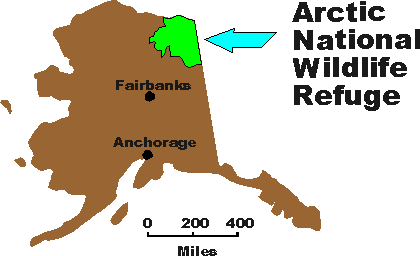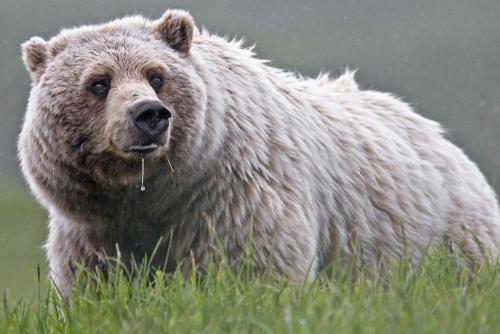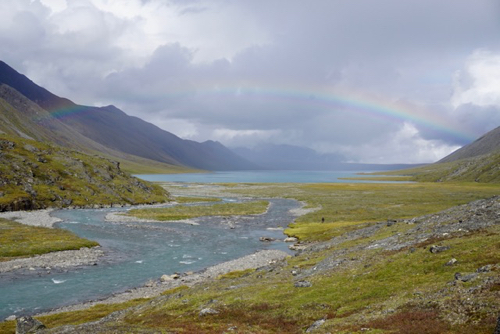Lake Peters is located in the Brooks Range and is a part of the Arctic National Wildlife Refuge (ANWR). ANWR is federally protected dating back to 1943, when the government "withdrew" most of the North Slope, or closed it to public and mineral use to reserve the land and its resources for use in WWII.
 ANWR is roughly the size of South Carolina.
ANWR is roughly the size of South Carolina.
The area of the withdrawal was incredibly remote. It was inhabited by Inupiat people who had lived in the area for thousands of years, hunting for game and birds on the coastal plains and in the Brooks Range, and fishing in the oceans. Despite the long cold winters, many ecosystems (from coastal plains to alpine) supported great diversity. Charismatic animals, such as polar bears, musk ox, caribou, Arctic ground squirrel, Dall sheep, grizzlies, wolves, and over 200 species of bird rely on the North Slope ecosystems.
 Grizzly bears are one of the charismatic animals that call ANWR home. (Credit: NPS)
Grizzly bears are one of the charismatic animals that call ANWR home. (Credit: NPS)
Decades after WWII, people sought protection for the wildness and diversity of northeastern Alaska so future generations could experience true wilderness. There was great, but not unanimous, support to conserve the wilderness, so a compromise was made: protect a large corner of Alaska but open other areas for oil development. The Arctic National Wildlife Range was established in 1960 to "preserve unique wildlife, wilderness, and recreational values," then expanded in 1980 into the Arctic National Wildlife Refuge. Under the designation, permitted hunting and fishing were allowed, but oil exploration and development were not.
ANWR is public land. It is ours, preserved so that our children and grandchildren can visit an undeveloped wilderness, a rare experience as our time outdoors usually involves roads, trails, and campgrounds. Minimal human impact makes ANWR an ideal place for scientists to study Arctic systems. My team will maintain wilderness by leaving behind no trash, trails, or other environmental damage. But the controversy remains. Another opinion is that instead of conserving, we should open ANWR to oil exploration. We have a great need for oil, and the Arctic contains large reserves. It is estimated that ANWR contains around 10.4 billion barrels of oil. While this seems like a lot, our approximated use of 19.63 million barrels per day means that opening ANWR would extend our supply by only 1.5 years.
If you follow the news, you will likely hear more debates over ANWR and other public land. There are no easy answers, but we must examine our values and determine what kind of world we will leave to our children, grandchildren, and great-grandchildren.
 A view of the Arctic National Wildlife Refuge wilderness. (Credit: Darrell Kaufman)
A view of the Arctic National Wildlife Refuge wilderness. (Credit: Darrell Kaufman)

Add new comment